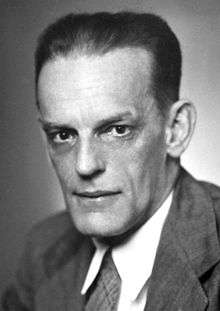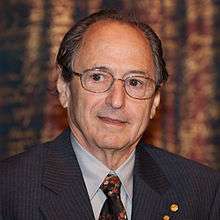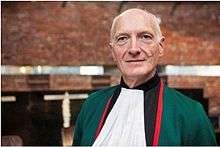Pretoria Boys High School
| Pretoria Boys High School | |
|---|---|
|
Badge of Pretoria Boys High School Virtute et Labore "Through Courage and Labour" | |
| Address | |
|
Roper Street Brooklyn Pretoria, Gauteng | |
| Coordinates | 25°45′38″S 28°13′26″E / 25.76056°S 28.22389°ECoordinates: 25°45′38″S 28°13′26″E / 25.76056°S 28.22389°E |
| Information | |
| School type | Public boys high school |
| Established | 3 June 1901 (1893) |
| Founder | The Rt Hon. Alfred Milner, 1st Viscount Milner |
| Sister school | Pretoria High School for Girls |
| Headmaster | Mr AD Reeler |
| Second Master | Mr JW Illsley |
| Staff | 100 full-time |
| Grades |
Forms I-V (Grades 8–12) |
| Gender | Male |
| Age | 13 to 18 |
| Enrollment | 1500 |
| Medium of language | English |
| Schedule | 07:30 - 14:00 |
| Hours in school day | 6h30 min |
| Campuses | 2 |
| Campus |
Main Campus Pollock Campus |
| Campus type | Urban |
| Houses |
Boarding houses: Rissik House Solomon House School house Dayboy houses: Arcadia House Abernethy House Armstrong House Hofmeyr House Matheson House Sunnyside House Town House |
| Colour(s) |
Red, White, Green |
| Song |
'Tis Here We Learn To Live, Forty Years On |
| Nickname | Boys High |
| Team name | Rugby 1st XV - Candies |
| Rival | Affies |
| Accreditation | Gauteng Department of Education |
| Newspaper |
The Phobian The Boys Highlights |
| Yearbook | The Pretorian |
| Website |
www |
 Main school building (1909). | |
Pretoria Boys High School, also known as Boys High, is a public, tuition charging, English medium boys high school located in Brooklyn, Pretoria, South Africa, founded in 1901 by The Rt Hon. Lord Milner. Its academic performance places it among the best secondary schools in rankings nationally, as well as in all of Africa.[1][2] Notable alumni includes two Nobel Prize laureates, 18 Rhodes scholars, several government ministers and members of parliament, 8 judges of the Supreme Court of Appeal of South Africa, as well as numerous prominent intellectuals and high-ranking sportsmen.[3]
The school enrols around 1500 pupils, including 300 boarders, from South Africa and beyond, managed by about a 100 full-time staff.
Its neoclassical red-brick style main school buildings date from 1909, maintaining provincial heritage site status. The school grounds also includes a second campus, Pollock Campus, as well as sporting and recreational facilities. Three boarding houses are located on the school grounds: Rissik House and Solomon House are part of the original school complex completed in 1909, while School House was built later.
The antecedent of the current school is the historic Staats Model School, built 1896-1897[4][5] by the government of the Zuid-Afrikaansche Republiek (later Transvaal) in central Pretoria. This school was not in operation for very long owing to the outbreak of the Second Boer War in 1899. At the time, the building served as a prison, where notably Winston Churchill was briefly imprisoned.[6]
Its sister school is Pretoria High School for Girls, founded in 1902.
History

The antecedent of the current school is the historic Staats Model School, built 1896-1897[4][5] by the government of the Zuid-Afrikaansche Republiek (later Transvaal) in central Pretoria.
This school was not in operation for very long owing to the outbreak of the Second Boer War in 1899. At the time, the building served as a prison, where notably Winston Churchill was briefly imprisoned.[6]
Pretoria High School (1901-1903)
With Pretoria under British control, it became apparent to Lord Milner, the Colonial Secretary at the time, that the educational facilities in the city needed attention as there was no secondary school for English-speaking pupils. The Staats Model School was duly refurbished. It was renamed Pretoria High School and became the first of the so-called Milner schools in the Transvaal, opening on 3 June 1901 with Charles Hope - who also founded Potchefstroom Boys High as headmaster. Initial enrolment was 32 pupils, both boys and girls, which increased to 132 by August of that year. Mr Hope left 15 months later, along with the girls, who were finally accommodated into the old building of the former Transvaal Republic's Staatsmeischjeskool (State Girls' School), which was renamed Pretoria High School for Girls.
Pretoria College (1903-1909)
Under the new headmaster, Harold Atkinson, enrolment increased to 100 boys by 1903. The name of the school was also changed to Pretoria College. Mr Atkinson left at the end of 1905 and was succeeded by J F Acheson who stayed with the school until it moved from Skinner Street to its current site in 1909. Formal devolution between primary and high school pupils only occurred in 1905.
The new buildings and bilingualism (1910-1920)
Milner's intention was to create a stable educational infrastructure in the new colony's capital and duly set aside 2 km² of ground to the south-east of central Pretoria for the construction of new academic institutions. The southern most 0.6 km², which included the Waterkloof Kop (English: Waterkloof Hill), was chosen as the new site for Pretoria Boys High School. The architect, Patrick Eagle, met the challenge by designing an edifice rivalling its larger contemporary, Sir Herbert Baker's Union Buildings. Eagle chose to site the main buildings on the ridge of the hill giving the school its well-known dramatic setting.
The new school buildings were officially opened in 1909 by General Smuts, then colonial secretary of the Transvaal. The main building of the school, sited on Waterkloof Hill, is at present close to University of Pretoria, sitting opposite to the distant Union Buildings on Meintjieskop.
One year later, the four colonies of the Transvaal, Orange Free State, Natal and the Cape formed the Union of South Africa. Keen to forge unity between English and Dutch (Afrikaner) South Africans, Smuts' influence was evident when, on 6 April 1910, the school absorbed 100 boys and staff from the Dutch-medium Eendracht High School to form a dual-medium high school. The combined school was now named Pretoria High School for Boys - Pretoria Hogere school voor Jongens. Smuts would later send his own sons to the school.
Devolution and re-establishment (1920)
The dual-medium institution would last ten years. By 1920, the divide between English and Afrikaans speakers had become apparent nationwide; this was reflected in the need for a separate Afrikaans high school in Pretoria. Consequently, the Afrikaanse Hoër Seunskool was formed immediately south of its parent, becoming the first Afrikaans-medium high school in the country, several years before Afrikaans attained official recognition as a language (and not a semi-Creole of Dutch). The two schools enjoy close ties to this day, especially in an enthusiastic but friendly rivalry in sporting events. PBHS would now be left in its present form, known as Pretoria Boys High School, an English-medium public school.
Headmasters since 1909
- William Hofmeyr (1909-1935)
- Daniel Matheson (1936-1949)
- Noel Pollock (1950-1955)
- Desmond Abernethy (1956-1973)
- Malcolm Armstrong (1974-1989)
- William E. Schroder (1990-2009)
- Antony Reeler (2010-)
School


Heraldry
According to John Illsley's "PBHS - The story of a SA school 1901 - 2001" (Pages 22 – 23), each component of the badge has a special meaning relating to the history and spirit of the school. The shield component of the badge is divided into four quadrants, with the book representing learning, the tools the wealth of the Transvaal through gold mining, the tree growth and the ox wagon the Transvaal. The background colours of the four quadrants were the colours of the first four houses when given permanent names, i.e. Town red, Solomon gold, Sunnyside black and Rissik green.
The school songs
The official school song, 'Tis Here We Learn To Live, was written in the 1930s by two Old Boys. The composer of the music, Dr George Findlay, was a prominent Pretoria dermatologist. However, the school later adopted Forty Years On, originally the school song of Harrow School in London. It is this song that is sung at all school valedictions. The official school song was relegated to obscurity until it was revived as the school's rugby anthem.
Culture and activities
Cultural activities
Cultural activities include a well-established musical tradition, with a formal symphony orchestra, choir, pipe band, jazz ensemble and folk group. Other activities include Photography, Fantasy and Historical war games, Aeronautical Society, Film, Wildlife, Drama, Debating, Chess, and many others.
Athletics and leisure
Sporting facilities include rugby union, cricket, Olympic standard athletics grounds, tennis, squash and basketball courts, a gymnasium, hockey fields, two swimming pools including one for waterpolo, an AstroTurf and a rock-climbing wall. There is also a man-made pine forest, an old shooting range which has been converted for the purpose of archery, an amphitheatre and an artificial lake, Loch Armstrong. The grounds form a protected bird sanctuary and are home to several different species of birds, fish, amphibians and reptiles.
School buildings
The new school buildings were officially opened in 1909 by General Smuts, then colonial secretary of the Transvaal. The main building of the school, sited on Waterkloof Hill, is at present close to University of Pretoria, sitting opposite to the distant Union Buildings on Meintjieskop.
Houses
Pretoria Boys High School is made up of ten constituent houses, each with its own unique culture and identity. House assemblies are held weekly, and house prefects are appointed annually. Annual inter-house sports meetings take place in which every pupil is strongly encouraged to participate. The inter-house swim meet (gala) is the most popular and well-attended of sport meetings.
Boarding houses
- Solomon
- Rissik
- School
Day-boy houses
- Abernethy
- Arcadia
- Armstrong
- Hofmeyr
- Matheson
- Sunnyside
- Town
The Old Boys Association
Pretoria Boys High School has a vast and active network of Old Boys, forming one of the largest alumni organisations in South Africa. Pretoria Boys High School Old Boys Association publishes an annual journal and review, The Phobian, which is distributed to Old Boys across the globe. Members of the association meet annually at the school for the annual dinner, and regular reunions of each matriculating group are organised 10, 20, 30 and 40 years on, echoing the refrain of the school song, Forty Years On.
Notable alumni




The school has produced two Nobel Prize laureates, 18 Rhodes scholars, eight Supreme Court judges, an archbishop, two English Premier League football players, five national cricketers and four Springbok rugby players.[7]
- Max Theiler, Nobel Prize laureate for physiology or medicine 1951 who produced the vaccine against yellow fever;
- Michael Levitt, Nobel Prize laureate for chemistry 2013 attended the school for two years;
- Peter Hain, British Cabinet Minister;[8]
- Edwin Cameron, Constitutional Court judge and AIDS activist;
- Billy Downer, Advocate of the Supreme Court, National Prosecutor and Rhodes scholar;
- Bernard Friedman, politician, writer, surgeon and founder of the Progressive Party;
- Vause Raw, South African politician and leader of the New Republic Party (NRP);
- Dennis Jensen, Australian politician and member of the Australian House of Representatives;
- David Epstein, mathematician and Fellow of the Royal Society;
- Elon Musk, internet, space, motor car and renewable energy entrepreneur;[9]
- Ian Kantor, co-founder of Investec Bank;
- Bernard Kantor, Managing Director of Investec Bank;
- Charles Kimberlin Brain (C. K. 'Bob' Brain), paleontologist, cave taphonomist;
- Damon Galgut, novelist;
- Richard Kunzmann, novelist;
- Gerard Moerdijk, Architect best known for designing the Voortrekker Monument;
- Eddie Barlow, South African cricketer;
- Jackie Botten, South African cricketer;
- Rik de Voest, professional South African tennis player;
- Philip Evans, South African national football player;
- Mark Fish, South Africa international football player;
- Ken Funston, South African cricketer and hockey player;
- Glen Hall, South African cricketer;
- Oscar Pistorius, 100m Paralympic sprint champion (Beijing, 2008)[10]
- Chiliboy Ralepelle, Springbok Rugby player;[11]
- John Smit, captain of the RWC 2007 winning Springbok team;[12]
- Francois Viljoen, U.S.A men's national rugby union Eagles player;
- Roy Wegerle, US international football (soccer) player.
- Simon Harmer, South African cricketer [13]
- Chris Morris, South African cricketer [14]
- Tucker Vorster, South African tennis player [15]
Notes and references
- ↑ Shingirai Huni (2013-08-03). "14 Zim schools named in Top 100". The Herald. Retrieved 2014-02-19.
- ↑ "The school". Pretorian.co.za. Retrieved 2014-02-19.
- ↑ "Pretoria Boys High School: The Story of a South African School 1901-2001" by John Illsley
- 1 2 "Staats Model School, C/o Nana Sita and Lilian Ngoyi Streets, Pretoria City Centre, Tshwane". Retrieved 19 February 2014.
- 1 2 "Staatsmodel School". Retrieved 19 February 2014.
- 1 2 The Churchill Centre: http://www.winstonchurchill.org/learn/myths/churchill-trivia/540-war
- ↑ John Illsley: Pretoria Boys High: The Story of a South African School (2001)
- ↑ "Profile: Peter Hain". BBC News. 2007-06-24. Retrieved 2008-12-20.
- ↑ "Profile: Elon Musk". Crunchbase. Retrieved 2010-12-08.
- ↑ Jacobs, Elize (2004-09-23). "High praise for 'phenomenal' Pistorius". Edition 1. The Cape Times. Retrieved 2008-12-20.
- ↑ "Profile: Chiliboy Ralepelle". sarugby.co.za. Retrieved 2012-07-11.
- ↑ "Profile: John Smit". sarugby.co.za. Retrieved 2012-07-11.
- ↑ . February 2014 http://www.espncricinfo.com/southafrica/content/player/432960.html. Missing or empty
|title=(help) - ↑ . September 2015 http://www.espncricinfo.com/usa/content/player/439952.html. Missing or empty
|title=(help) - ↑ . September 2015 http://www.atpworldtour.com/en/players/tucker-vorster/v600/overview. Missing or empty
|title=(help)